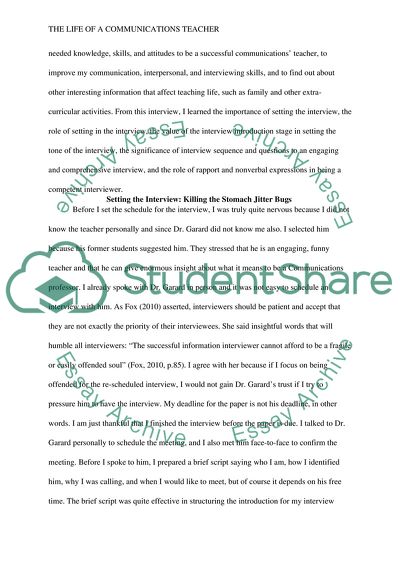Cite this document
(The Life of a Communications Teacher Term Paper Example | Topics and Well Written Essays - 2000 words - 1, n.d.)
The Life of a Communications Teacher Term Paper Example | Topics and Well Written Essays - 2000 words - 1. https://studentshare.org/journalism-communication/1829980-career-interview-and-analysis
The Life of a Communications Teacher Term Paper Example | Topics and Well Written Essays - 2000 words - 1. https://studentshare.org/journalism-communication/1829980-career-interview-and-analysis
(The Life of a Communications Teacher Term Paper Example | Topics and Well Written Essays - 2000 Words - 1)
The Life of a Communications Teacher Term Paper Example | Topics and Well Written Essays - 2000 Words - 1. https://studentshare.org/journalism-communication/1829980-career-interview-and-analysis.
The Life of a Communications Teacher Term Paper Example | Topics and Well Written Essays - 2000 Words - 1. https://studentshare.org/journalism-communication/1829980-career-interview-and-analysis.
“The Life of a Communications Teacher Term Paper Example | Topics and Well Written Essays - 2000 Words - 1”. https://studentshare.org/journalism-communication/1829980-career-interview-and-analysis.


